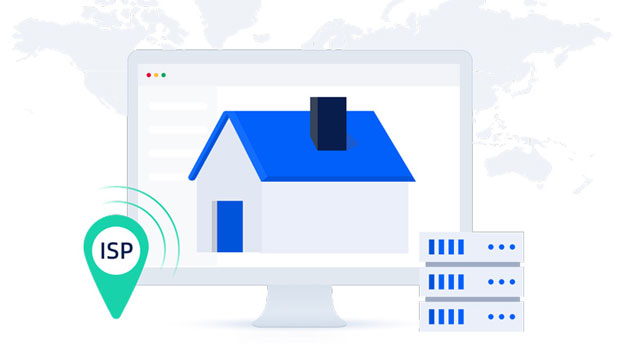In today’s digital age, maintaining online privacy and security is a growing concern. Proxy servers have become an essential tool in safeguarding anonymity, with SOCKS5 being one of the most widely used protocols for secure browsing. Among the many proxy services available, PYPROXY and Croxy Proxy stand out as two popular choices. But when it comes to safety, which one truly provides a better shield for your online activity? This article will delve into a comprehensive comparison between PyProxy and Croxy Proxy, evaluating their security features, performance, and overall reliability. Introduction to SOCKS5 and Its Role in Online AnonymitySOCKS5 (Socket Secure 5) is a proxy protocol designed to handle all types of internet traffic, offering more versatility than other proxies. Unlike HTTP proxies, which only handle web traffic, SOCKS5 works with any kind of protocol, including torrents, online games, and P2P networks. The primary function of sock s5 proxies is to mask your real IP address, encrypt your traffic, and route it through a remote server, ensuring that your identity remains anonymous. However, not all SOCKS5 proxies are created equal. The security and effectiveness of the proxy depend largely on the service provider and its infrastructure.Understanding PyProxy and Croxy ProxyBefore comparing the safety of PyProxy and Croxy Proxy, it’s essential to understand what each service offers:PyProxy is an open-source proxy server designed with privacy and flexibility in mind. It supports SOCKS5, and being an open-source project, it allows users to set it up on their own servers for complete control over their data. PyProxy boasts features like high customization, robust encryption methods, and compatibility with various platforms.Croxy Proxy, on the other hand, is a web-based proxy service that offers easy access without requiring users to configure or install anything on their devices. It supports SOCKS5 and other protocols while offering users the ability to browse websites anonymously. However, as a commercial service, Croxy Proxy may collect user data for performance optimization or advertising purposes.Security Analysis: PyProxy vs Croxy ProxyWhen it comes to online safety, various factors need to be considered: data encryption, server security, user privacy, and whether the service maintains logs of user activity.1. Data EncryptionBoth PyProxy and Croxy Proxy use SOCKS5, which inherently supports high-level encryption. However, the strength of encryption varies depending on how each service is implemented.- PyProxy: As an open-source proxy, PyProxy gives users the freedom to customize encryption settings. Users can configure the server to use advanced encryption algorithms, such as AES-256, ensuring that their traffic is securely encrypted. Additionally, since users can host PyProxy on their own servers, the risk of data breaches or leaks is significantly reduced.- Croxy Proxy: Croxy Proxy offers SSL encryption for secure browsing, but being a web-based proxy, it might be more susceptible to attacks such as DNS leaks or man-in-the-middle attacks, depending on the server setup. While it encrypts web traffic, some advanced encryption methods may not be available, potentially leaving users exposed in certain scenarios.2. Server Security- PyProxy: With PyProxy, the security of the proxy server entirely depends on the user’s configuration and the server they choose to use. While the flexibility of setting up your own server can be an advantage in terms of control, it also requires a higher level of technical knowledge. Improper setup can lead to vulnerabilities that hackers might exploit.- Croxy Proxy: Croxy Proxy operates its own infrastructure, meaning the company is responsible for maintaining the servers. This can be an advantage in terms of reliability and security updates. However, as with any commercial proxy service, there is a risk that the service could be targeted by hackers or government agencies seeking access to user data.3. User Privacy and Logging Policies- PyProxy: Since PyProxy is open-source, it does not have a centralized logging system. This means that it does not track or store user data unless the user configures it to do so. This makes it a much safer option for users who prioritize privacy and anonymity.- Croxy Proxy: Croxy Proxy, being a commercial service, may collect certain data such as IP addresses and browsing activity for performance optimization, security monitoring, or advertising purposes. While they likely have a privacy policy in place, the fact that they may store user data raises concerns for those seeking complete anonymity.4. Anonymity and IP Address Protection- PyProxy: By routing your traffic through a private server, PyProxy helps effectively mask your real IP address. However, as mentioned, users have to take responsibility for the server setup. If the server is compromised or improperly configured, the anonymity of the user could be at risk.- Croxy Proxy: Croxy Proxy masks your IP address by routing your traffic through its own servers. While this offers anonymity, users have to trust the service to keep their data secure. Moreover, since it is a public proxy, there may be instances where Croxy Proxy faces legal pressure to disclose user data.Performance and Speed ComparisonPerformance is another crucial factor when choosing between proxy services. Speed can be affected by the proxy’s server location, bandwidth limitations, and the overall traffic load on the servers.- PyProxy: The performance of PyProxy largely depends on the server’s specifications and location. Users with access to high-speed servers will experience faster connections. Since PyProxy is self-hosted, users can choose servers with low latency and high bandwidth for optimal performance.- Croxy Proxy: As a web-based proxy, Croxy Proxy’s performance can vary depending on the number of users and the specific servers used. While it offers decent speeds, users may experience slower connections if the servers are overloaded or located far from their geographical region.Conclusion: Which is Safer? PyProxy or Croxy Proxy?In conclusion, when comparing PyProxy and Croxy Proxy from a safety perspective, PyProxy emerges as the more secure choice for users who prioritize control, privacy, and the ability to customize their encryption settings. Since it is open-source and self-hosted, users have full control over their data, reducing the risk of third-party interference or data collection.On the other hand, Croxy Proxy is more convenient for users who seek an easy, no-setup option. However, as a commercial service, it may log certain user data, which could be a concern for those looking for complete anonymity. While it offers secure browsing through SSL encryption, the risk of data collection and possible leaks due to its centralized infrastructure makes it a less secure option compared to PyProxy.Ultimately, the choice depends on the level of control and privacy users require. For those seeking maximum security and privacy, PyProxy is the better option, while Croxy Proxy may be suitable for casual users who prioritize convenience over strict anonymity.
Oct 26, 2025



































































